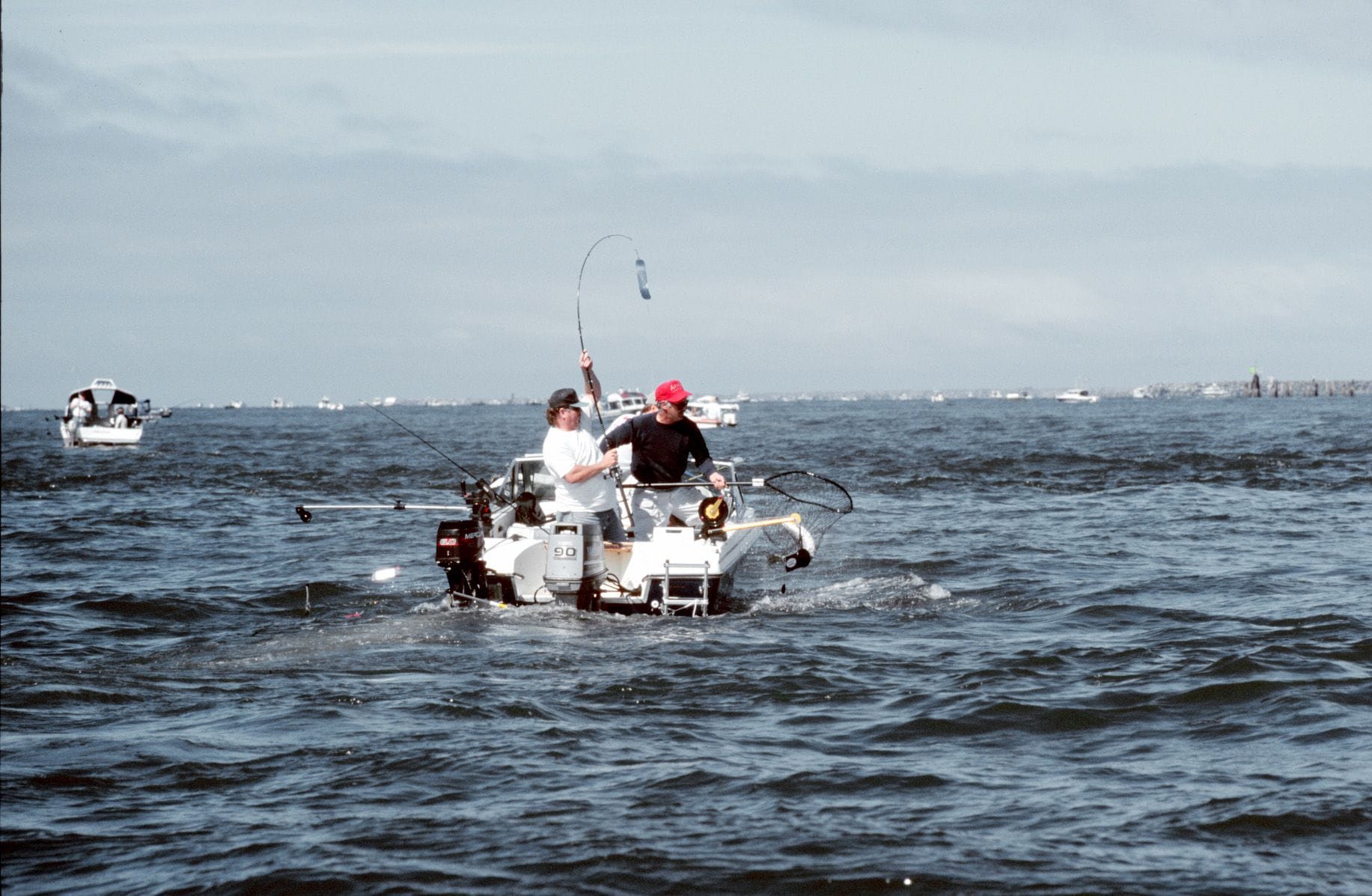Huge runs of fall chinook and coho salmon are forecast to enter the Columbia River in 2014, but it appears sport-fishing seasons will be similar to a year ago.
State, federal and tribal biologists predict a return of 1.6 million fall chinook destined for the Columbia beginning in August, which would be the highest return since record keeping began in 1938 with completion of Bonneville Dam
Another 964,000 coho will be swimming off shore, with about 700,000 anticipated to enter the Columbia after ocean sport and commercial seasons.
Despite the wealth of salmon, a forecasted return of 110,000 fall chinook headed for hatcheries on lower Columbia River tributaries is the weak stock upon which harvest rates are determined.
Those hatchery fish are surrogates for wild-spawning tule fall chinook, which are similar but harder to forecast.
Officials from the Washington and Oregon departments of Fish and Wildlife met Monday in Vancouver with leaders from Columbia River sport and commercial fishing interests.
The underlying message: There’s still lots to be determined, but fisheries akin to 2013 — perhaps with some tweaks — are likely this August, September and October.
The Washington-Oregon goal for the Buoy 10 season at the mouth of the Columbia River is to get from Aug. 1 through Labor Day with retention of unmarked chinook allowed.
In 2013, chinook retention from Aug. 23 through Sept. 1 was limited to hatchery fish to avoid exceeding guidelines. All chinook retention was closed Sept. 2 through 12, then hatchery chinook only again Sept. 13 through 25.
Anglers kept 6,900 chinook during those periods while releasing 10,600.
Ron Roler, Columbia River policy coordinator for the Washington Department of Fish and Wildlife, said two of three computer model runs juggling all the needs for sport and commercial fisheries in 2014 have Buoy 10 running out of chinook a day or two short of Labor Day, which is Sept. 1.
Roler also said a repeat of 2013 is possible, with excellent catches at Buoy 10 attracting a large influx of anglers and the chinook allocation getting used up by Aug. 20 to 25.
“We’ve never had a run this big,” he said. “With the increased effort, Buoy 10 could be huge. We don’t know if it will last as long as we’ve modeled.”
Between Tongue Point near Astoria and Woodland, the goal is to have any-chinook retention open through Sept. 7, then a week of hatchery-chinook-only.
Modeling shows that stretch of the river running out of chinook by about Sept. 5, he said.
Several sport-fishing representatives asked the states to run models with the following regulation changes:
o Allowing limited retention of wild coho salmon at Buoy 10, perhaps on “wild Wednesdays.”
o Allowing retention of wild coho salmon at Buoy 10 once chinook fishing shifts to hatchery-only.
o Allowing wild coho retention after Labor Day to extend fishing interest at Buoy 10.
o Increase the coho bag limit at Buoy 10 after Labor Day to keep anglers in the area.
“I get really frustrated when he have to release dying fish,” said Robert Moxley of Dundee, Ore., a member of the bistate Columbia River Recreational Adviser Group. “It’s not right.”
Steve Watrous of Vancouver, a member of Salmon Advisory Subpanel of the Pacific Fishery Management Council, said wild coho release has been the rule most of the time in the ocean since 1999.
“But the No. 1 complaint we hear is they ought to get to keep the first two fish caught,” he said.
Butch Smith of the Ilwaco Charter Association said wild release has been institutionalized, but it was never meant to apply to coho in perpetuity as it does to steelhead.
“Some times we lose sight of that,” Smith said.
Cindy LeFleur, regional fish program manager for the Washington Department of Fish and Wildlife, said allowing wild coho at Buoy 10 would cut the season in half. But allowing a wild coho upstream of Buoy 10 might be feasible, she added.
Coho bite poorly in the lower Columbia and relatively few are caught outside the estuary.
LeFleur also mentioned closing the Columbia for about a week just upstream of Tongue Point.
Smith said in the past five years the Columbia between Tongue Point and Rice Island has become a “slaughterhouse” after Buoy 10 closes, with the sport fleet simply moving slightly upstream.
The growth of that fishery has resulted a shift of catch to Tongue Point and away from the Longview-Woodland-Vancouver area, he added.
Commercial seine fishery — Roler said most of the details are yet to be determined in a planned seine fishery in the lower Columbia River.
A limited number of beach and purse seines are anticipated in 2014, probably in late August or early September, he said. It is unknown if sport-fishing closures will be necessary during the seining.
Reforms adopted by Washington and Oregon call for the phase out of gillnets from the Columbia River by 2017 and a shift to alternative gear, such as seines. The plan is to have at least some commercial seining starting this fall in order to learn more how the fishery performs.
A public meeting is scheduled at 9 a.m. April 3 in Room No. 172 of the Natural Resources Building, 1111 Washington St. S.E., Olympia, to finalize details of the summer and fall ocean and Columbia River fisheries.
The Pacific Fishery Management Council will adopt the 2014 ocean rules when it meets April 5 through 10 at the Hilton Vancouver Washington, 301 W.Sixth St.




